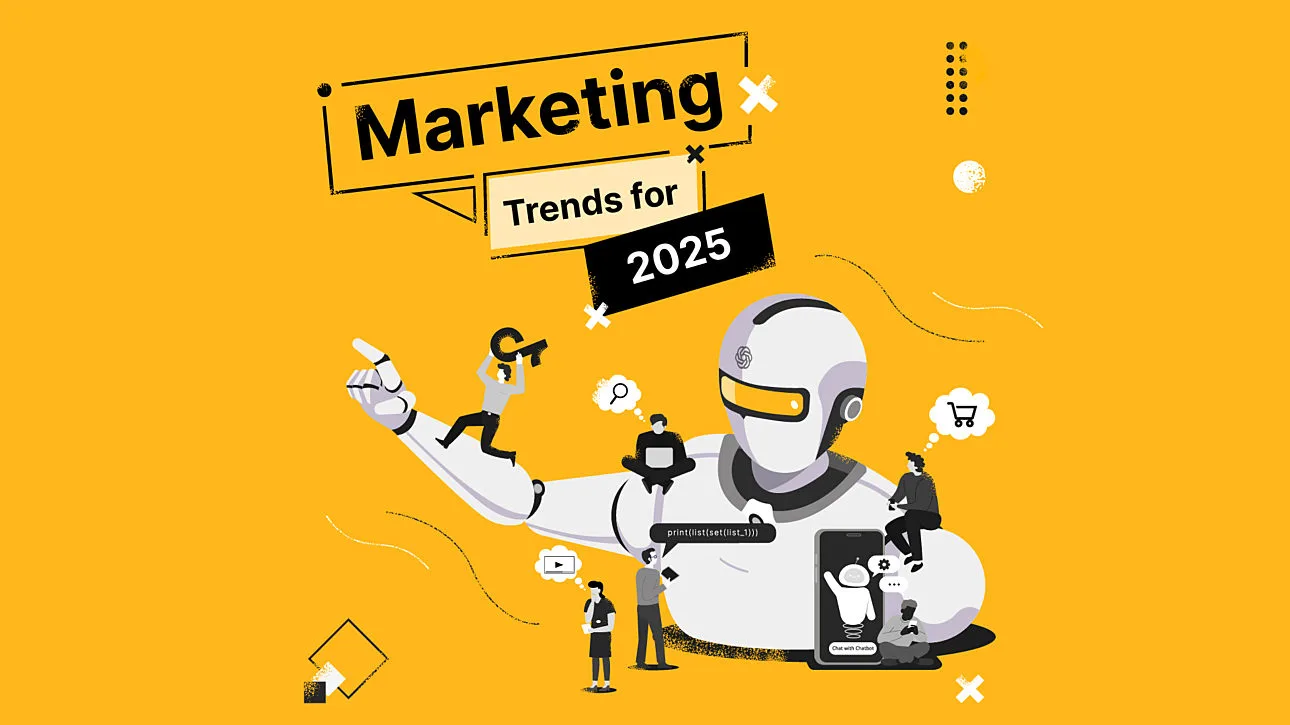In today’s fast-evolving digital landscape, businesses face increasing challenges in keeping up with emerging technologies and shifting consumer behaviors. As we move through 2024, it’s crucial for marketers to not only stay informed about new trends but also adopt strategies that help them remain competitive and innovative. In this report, we explore the top digital marketing trends shaping the industry. From the importance of defining a digital strategy to the rising influence of Generative AI and the growing relevance of AI-assisted marketing, these insights provide actionable steps for businesses looking to optimize their digital presence and performance.
Whether you’re working in a large organization or a small business, these trends are designed to help you assess where you stand in terms of digital maturity, marketing operations, and technological adoption—and what steps you can take to move forward.

Lack of a Dedicated Digital Strategy
– Problem: Nearly half of businesses still operate without a clear digital marketing strategy, relying instead on fragmented digital efforts.
– Solution: Adopt an integrated digital strategy, potentially starting with a dedicated plan before full integration.
– Action: Audit your digital marketing strategy to ensure competitiveness in key channels.
Digital Maturity Increases (Slowly)
– Problem: Many businesses show low digital maturity (levels 1–2 out of 5). Progress towards improvement is slow, especially due to resource constraints.
– Solution: Aim for level 3 as a baseline, with higher aspirations for businesses dependent on digital channels.
– Action: Benchmark your maturity across marketing pillars and prioritize activities with the greatest potential for growth.
Standard Operating Procedures (SOPs) for Smarter Marketing
– Problem: Reinventing the wheel leads to inefficiency. Many businesses lack SOPs that can streamline repetitive processes, especially in e-commerce.
– Solution: Implement SOPs across marketing activities to drive efficiency and improvement.
– Action: Review SOPs in use and identify areas where processes can be standardized.
Smarter Marketing Fueled by Gen AI
– Problem: Resourcing challenges slow digital maturity. Gen AI offers a way to do more with less, but many businesses misuse or underuse it.
– Solution: Use Gen AI to partially automate processes and define SOPs, but ensure quality through AI governance policies.
– Action: Establish governance for AI usage, ensuring tools are used appropriately and maintaining content quality.
The AI-assisted Marketer

– Problem: While AI can support various marketing activities, many marketers lack the framework or governance to fully harness its power.
– Solution: Use AI for planning, analysis, and reporting while ensuring transparency in tool usage.
– Action: Develop an AI Governance Policy to outline how AI tools should be used across marketing activities.
– Problem: Monolithic marketing technology stacks are often inflexible, leading to inefficiency.
– Solution: Move toward composable MarTech, using smaller, independent software components that integrate effectively.
– Action: Review your MarTech stack for integration opportunities, focusing on tools that drive effectiveness.
Zero Click Marketing
– Problem: A significant proportion of searches on Google (and other platforms) no longer lead to clicks, reducing traffic to destination sites.
– Solution: Focus more on brand-building, awareness, and PR, using content marketing beyond just SEO.
– Action: Evaluate your content distribution strategy, focusing on creating high-engagement, zero-click posts.
AI Integration into SERPs and Its Impact on Search

– Problem: AI-generated answers in search results reduce the need for traditional search clicks.
– Solution: Monitor how AI overviews (AIOs) affect your SEO strategy, focusing on standing out in non-AI SERP features.
– Action: Use SEO tools to track performance against competitors in AI-enhanced SERP features.
The Ever-receding Cookieless Future
– Problem: Despite years of preparation, Google’s recent decision to delay third-party cookie removal keeps marketers reliant on cookies.
– Solution: While cookies remain, start exploring alternative tracking methods and prepare for the eventual transition.
– Action: Review your third-party cookie use and ensure compliance with evolving privacy regulations.
Digital Marketing Optimization Still Too Hard for Many
– Problem: Few companies have a continuous, structured approach to optimization, despite its importance in digital marketing.
– Solution: Implement a structured program for testing and optimization to drive continuous improvement.
– Action: Introduce structured optimization processes, such as using a 90-day planning approach for ongoing improvements.
Bonus Trend: Strategic Content Marketing
– Problem: Many businesses still lack a dedicated content marketing strategy, despite content’s importance in B2B and B2C marketing.
– Solution: Integrate content marketing into your broader marketing strategy and prioritize types of content that resonate with your audience, like video.
– Action: Assess your content marketing strategy’s alignment with overall business goals and consider upgrading it for better integration.
Each trend emphasizes the growing complexity of digital marketing, calling for a structured, resource-efficient approach to stay competitive. Implementing these changes could lead to greater operational efficiency, higher engagement, and improved ROI.
At Balistro, we specialize in helping businesses grow through effective digital marketing strategies. From Google Ads to Meta Ads, we deliver data-driven campaigns that maximize your ROI and drive real results. If you’re looking to boost your online presence, generate leads, or scale your e-commerce business, our expert team is here to help. Contact us today to learn more about how we can support your advertising needs!



